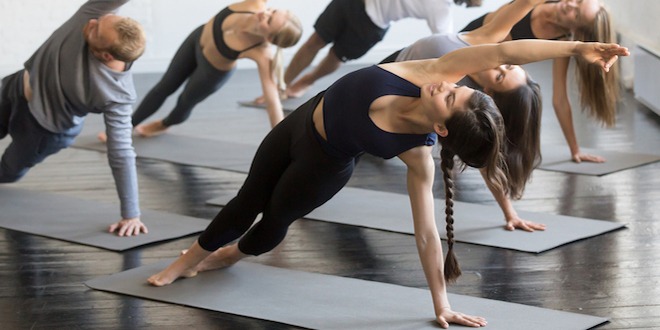All people with diabetes – whether they have type 1 or type 2 – benefit greatly from exercise. Physical activity can help keep your blood sugar levels in their target range, and help you lose weight (if needed). It can also help you prevent or delay the complications of diabetes. So, what types of exercise for diabetes should you choose?
While aerobic and resistance exercises are especially recommended for people with diabetes, any activity that gets you moving and elevates your heart rate is a good choice!
Here are some physical activities that have lots of health benefits.
Aerobic exercises
Aerobic exercises are rhythmic, repeated and continuous movements of the same large muscle groups for a period of time. Examples of aerobic exercise include biking, walking, jogging, swimming, water aerobics, dancing, and gardening or raking leaves.
Aerobic exercises have a wealth of benefits for people with diabetes. They help your body use insulin better, relieve stress, improve blood circulation and reduce your risk for heart disease by lowering blood sugar (glucose) and blood pressure levels, and improving cholesterol levels.
According to Diabetes Canada, people with diabetes should take part in a minimum of 150 minutes of aerobic exercise each week. This activity should be spread over at least 3 days of the week, with no more than 2 days in a row without exercise.
Try picking 1 or 2 aerobic exercises that you enjoy, and gradually work up to a minimum of 150 minutes of activity each week. It is always best to consult your doctor and/or an exercise specialist if you are new to working out.
Learn more about building your own exercise plan for diabetes here.
Swimming
Swimming is a great aerobic exercise, that can help enhance your overall fitness level. As well, swimming also helps improve your heart health: the constant movements of your arms and legs allow the blood and oxygen in your body to be pumped more efficiently.
Many people enjoy swimming as their aerobic activity, because it is a low impact exercise. Unlike higher-intensity sports like football or running, swimming doesn’t strain your joints. It also uses both upper and lower body muscles at the same time, which actually helps control your diabetes: stronger muscles become more sensitive to insulin and absorb more glucose from the blood, resulting in lowering of A1C.
Swimming laps in a pool for 20-30 minutes, two to four times a week, would be an excellent way to add more aerobic exercise to your fitness plan.

Yoga
Yoga is a series of mental, physical and spiritual disciplines that originated in ancient India more than 5,000 years ago. It involves various body postures and movements, breathing techniques and meditation, which are all designed to promote physical comfort and mental composure.
It is well known that regular practice of yoga can help reduce levels of stress, enhance mobility, lower blood pressure and improve overall well-being. These are the benefits that many health experts believe can improve diabetes management and also protect against diabetes complications such as heart disease.
Some of the other benefits of yoga include:
- Better sleep
- Reduced anxiety levels
- Enhanced feelings of well-being
- Improved digestion and circulation
- Improved posture, flexibility and strength
- Enhanced concentration and energy levels
Attending a yoga class, or doing yoga in your home for 30-60 minutes, 1-2 times per week, is an excellent way to incorporate elements of resistance training, balance and flexibility exercises into your fitness plan.

If you are looking for a great way to plan your weekly physical activity, this exercise planner will be a big help! Go day by day, and fill out the type of physical activity you have completed or plan to complete. This exercise planner will help you stay accountable to your fitness goals, and will allow you to track your progress over weeks and months.
Learn more about exercises for people with diabetes here.
 Diabetes Care Community Learn, connect and care
Diabetes Care Community Learn, connect and care








